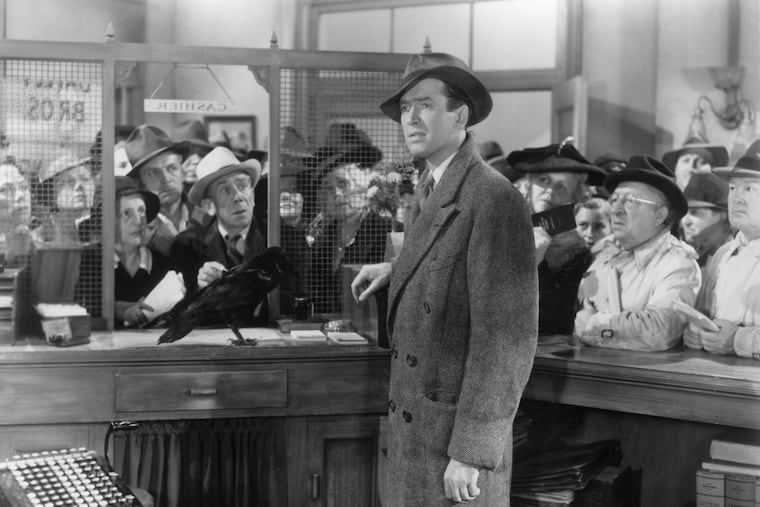Silicon Valley Bank’s demise is not symptomatic of a broken U.S. banking system
Americans should be confident that their deposits are safe.

The seriousness of the banking crisis became clear when my mother-in-law, who is in her 90s, asked whether her savings account at a large regional bank was safe. I knew that if she was worried, so too was the rest of America, and the specter of a full-blown bank run was real.
The last time the nation suffered a run on the banking system was nearly a century ago at the start of the Great Depression. Remember Jimmy Stewart, the community banker in It’s a Wonderful Life, who nearly lost his bank to a run? Fortunately, while the script is still being written on the current bank crisis, my mother-in-law and the rest of America should be confident that their deposits are safe.
The crisis seemed to come out of nowhere when Silicon Valley Bank, a smallish mid-sized California bank that catered to start-up tech companies, ran into financial trouble. The bank had invested these companies’ deposits in long-term Treasury and mortgage-backed bonds.
» READ MORE: What killed Silicon Valley Bank, and who will cover its losses?
That was a huge mistake. The value of those bonds fell sharply as interest rates surged over the past year. When the tech sector hit the skids and those companies started drawing down their deposits, Silicon Valley Bank had to come up with cash and was forced to sell the bonds at a big loss. This quickly sparked concern that the bank wouldn’t be able to pay all depositors, and depositors were bolting for the door.
Social media posts supercharged the fear, imploring depositors to get their money out fast. This was an old-fashioned bank run fueled by new technology.
If it sounds improbable that a banking crisis could be ignited by the travails of one among 4,700 U.S. banks, it is.
Silicon Valley’s demise is not symptomatic of a serious broader problem in the banking system. Nearly all banks have invested in bonds that are now worth less, but not nearly to the point of jeopardizing their ability to pay depositors.
Regardless, once depositors lose faith in the viability of their banks and start withdrawing funds, the only way to restore that faith is for the government to step up and backstop the banks. That’s what President Franklin Roosevelt did to end bank runs so long ago, and that’s what the Biden administration, Federal Reserve, and FDIC did in response to this one.
» READ MORE: Silicon Valley Bank bust slows biotech funding, but the ‘science itself has never been faster’
They agreed to guarantee all the deposits in Silicon Valley Bank. This includes those of smaller depositors with less than $250,000 in the bank — the amount the FDIC normally insures — and the big depositors with more in their accounts. The guarantee should allay depositors’ fears about getting their money and put an end to bank runs.
Critics of this move argue that it is a bailout of big depositors, who should have known better than to put their money in a struggling institution that was then empowered to make bad lending and investment decisions. Perhaps — but policymakers determined that not guaranteeing the deposits of all depositors, small and big, would trigger a broader loss of confidence in the banking system and could potentially cause bank runs, which would endanger the entire financial system.
The Federal Reserve also stood up a new credit facility, the Bank Term Funding Program, that allows banks to pledge their Treasury and mortgage-backed bonds at par (as if they weren’t worth less) in exchange for loans at reasonably attractive rates. This provides substantial relief to those banks that are suffering losses on their securities.
The weak links in the global financial system are also being quickly plucked out. The FDIC shut down Silicon Valley Bank and two others caught up in the crypto mania; the Swiss government forced a sale of troubled Credit Suisse to its healthy competitor; and U.S. officials cajoled the nation’s biggest banks to support another struggling small California bank also with deep ties to the tech industry.
This all seems to be working. Depositors are no longer pulling their money out of banks, the stock market has recovered, and my mother-in-law is no longer asking if she should move her savings.
There will, of course, be some economic fallout from this banking crisis. The biggest hit to the economy will come from further tightening in bank lending standards to households and businesses. Small and mid-sized banks will understandably be the most cautious, and they account for about one-half of lending by banks to businesses, a similar share of consumer lending, and over three-fourths of commercial mortgage lending. Less credit means less economic growth.
But while the banking crisis will weigh on the economy, it is unlikely to be the event that pushes us into recession. Nonetheless, it is incumbent on regulators to figure out why things went so wrong at Silicon Valley Bank, why the troubles there metastasized so quickly, and make changes to ensure it doesn’t happen again.
Mark Zandi is chief economist for Moody’s Analytics.